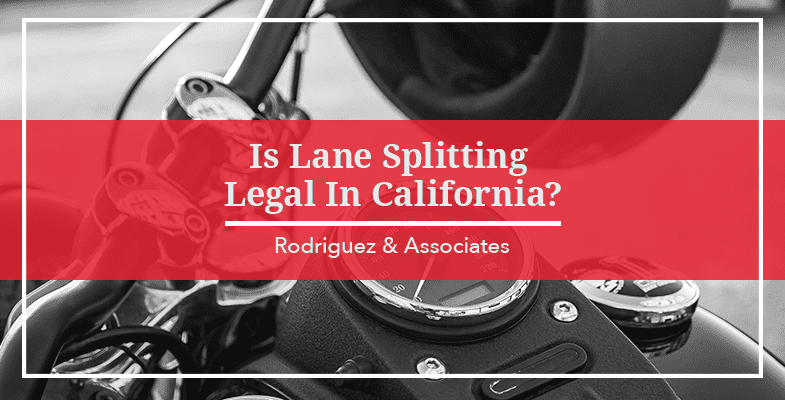Lane splitting, also called “lane sharing” or “white-lining,” describes a motorcyclist cutting between lanes of slower-moving traffic, or pulling in front of stopped traffic at a red light. While this may sound dangerous, it can actually help improve the flow of traffic and allow motorcyclists to escape congested areas where they are more likely to get into motorcycle accidents.
California allows competent, experienced motorcyclists to lane split as long as they follow a few guidelines:
- The motorcyclist should not exceed 10 miles per hour faster than the surrounding vehicles. For example, in a 25 mph speed limit zone, motorcyclists should not exceed 35 mph to lane split. Higher speeds mean less time for motorcyclists to react to changes on the road or slow down in time to avoid colliding with other vehicles.
- Motorcyclists should only engage in lane-splitting in low-speed areas. Ideally, no one should lane split at any speed above 35 mph. At even 20 mph it can take several seconds for a rider to notice and react to a change in traffic, and the rider can travel up to 60 feet in that short time.
- Try to only engage in lane-splitting in the two leftmost lanes. Drivers are more accustomed to seeing lane splitting on the left side of the road, and drivers may not react appropriately to lane-splitting on the right side of the road.
- Avoid lane splitting on sharp curves and freeway ramps.
- Only one motorcyclist should attempt to lane split at a time, and motorcyclists should never attempt to lane split across multiple adjacent lanes at the same time. For example, if two motorcyclists attempt to lane split between three cars across three lanes, motorcycles suddenly appearing on either side of the driver in the middle lane may startle him or her, or the driver may drift to one side or the other to make room for the motorcyclist the driver spots first.
- Refrain from lane splitting on sharp turns, long curves, or roads that have differently-sized lanes.
- Avoid lane-splitting at night when visibility is poor. A motorcycle suddenly speeding between lanes can be difficult to see, and other drivers may react poorly. Nighttime is a good opportunity for motorcyclists traveling together to engage in “lane-sharing,” or driving side-by-side in the same lane. This actually makes the motorcycles more visible to other drivers as their taillights resemble a larger, more visible car from a distance. Motorcyclists who lane-share still need to be very aware of the distance between them.
- Avoid lane-splitting during severe weather. Inclement weather makes driving more difficult for all drivers, but motorcyclists often suffer the most. Motorcycles are more prone to sliding and other water-related hazards than larger, heavier cars. Lane-splitting in the rain makes an already hazardous situation more dangerous.
- Be very careful of the time you choose to split lanes. Stay alert for sudden changes on the road, and complete each split as quickly as possible. Taking too long could mean lingering in another driver’s blind spot for too long.
Lane splitting is legal in California and can sometimes help other drivers by alleviating traffic congestion. However, it’s important for California motorcyclists to understand the risks of lane splitting and only do so when conditions are safest. If you or somebody you love was injured in a motorcycle accident, reach out to a knowledgeable personal injury attorney in Bakersfield.
